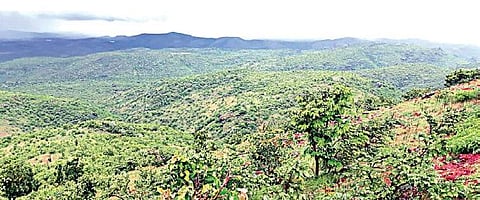

BENGALURU: After decades of struggle by people and religious institutions in the face of strong opposition from mining companies, the Karnataka government has finally notified the pristine Kappatagudda forests as a wildlife sanctuary on May 16 under the Wildlife Protection Act, 1972.
This supersedes the earlier notification of Kappatagudda as a ‘conservation reserve’ in 2015/17. The sanctuary will comprise an area of 244.15 sq km (24,415.73 hectares) spread across the three taluks of Gadak, Mundargi and Shirahatti in Gadag district.
The protected area will include notified reserve forests in Gadak district that has floral, faunal, geomorphological and ecological importance where its wildlife has to be protected and conserved, the notification states.
The wildlife sanctuary, however, will not include any revenue villages, revenue land or patta land. People from all walks of life, including religious mutts, farmers, forest officials, students and environmentalists were involved in the movement to secure protected forest status to save this precious heritage in north Karnataka from destruction. Being rich in gold and iron deposits, the hill ranges, which are rich in biodiversity, were eyed by mining lords from Ballari.
During 2017, the then PCCF (wildlife) B J Hosmath worked to get back the tag of conservation reserve. With the state government dilly-dallying, the reserve was denotified and then again re-notified as conservation reserve in 2017. In fact, more than 15 religious mutts were involved in the ‘Save Kappatagudda’ movement, led by the late Siddalinga Swami of Tontadarya Mutt, popularly known as the Green Seer.
Welcoming the declaration, wildlife activists, conservationists and experts said, “Kappatagudda has a unique landscape – almost similar to Western Ghats — and is considered a treasure trove of unique flora and fauna and also the rarest of rare medicinal plants. This area is under immense pressure and therefore, needs special protection.
The forests are ecologically unique, rich and valuable and are irreplaceable. By giving it the PA status, the government has shown its commitment to conservation.”